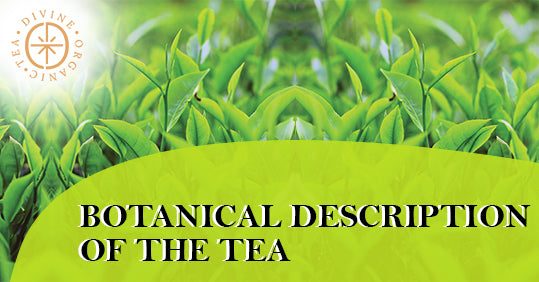The tea bush (Chinese camellia, tea) is an evergreen plant of the Tea family and the Camellia genus. The historical homeland of this shrub is the mountainous subtropical and tropical forests of Southeast Asiatic. China is the country where this plant was grown first time more than 4000 years ago (Darjeeling Tea). It was a great Asian culture that gave to mankind the art of making tea from infusions of leaves and buds of this bush.
Before 1500, tea, as we know it today, had been already cultivated in Japan, Korea, Vietnam, Thailand, Malaysia, Laos, and other Asian countries. The spread of the culture of tea drinking closely followed that of cultivation: in 1610 -England, in 1658- Holland (Dutch), in 1720 – France (Paris). Tea came to America not before 1839 when it was imported by Boston port.
During his long way from China where it was grown in the wild state, tea leaves and buds were dried. The same drying method is still applied to this plant today before it is packaged or sold as Green Leaf Tea.
This plant has widely different varieties (subspecies) due to the climatic conditions of breeding places. Such differences are not only morphological but also chemical and biological. In the wild state, tea is known to grow in India and especially Sri Lanka. Botanical names of the plant Camellia Sinensis, C. assamica, and others (Camellia Thea) are role-titled for different varieties growing in China, Japan, Korea, and other Asiatic countries. These botanical species belong to the Camellia family as well as camellias and sasanquas grew on a small scale in gardens of England, France, or into home parks of Russia.
Tea bushes can be over 10 meters high. In cultivated areas, the plant is regularly pruned to achieve pronounced bushiness. In addition, the moderate height of the bush makes the harvesting process easier.
Tea leaves are dark green on top and lighter tones on the bottom, oval in shape, narrowed towards the top.
Leaves
Each leaf can be up to five centimeters long, the young leaves of the tea bush have a slight fluff. The flowers are arranged singly, have a fragrant aroma, reach up to three centimeters in diameter. Color leaves are concentrated in a spiral. The calyx has up to seven sepals, round in shape. The stamens are located in two circles: the outer ones are accreted to the petals, while the inner ones remain free. Anthers are ovoid, small. The fruit is a tricuspid capsule, slightly flattened.
Seeds
The seeds are dark brown in color and rounded, up to 13 mm long and 1 mm thick. The flowering period of Chinese camellia occurs in early August - mid-November. Begins to bear fruit from the beginning of autumn.
Collection rules
To obtain a good harvest, it is necessary to harvest the young tops of the tea bush in a timely manner, until they become tough and unsuitable for the production of the famous drink. Most leaves are harvested manually, which takes a lot of time and human labor.
Due to the lack of manpower and the vast areas occupied by tea plantations, some growers have resorted to using special machines to harvest the young shoots of the plant. But this deteriorates the assembly quality many times over and does not allow harvesting the leaves for the production of elite varieties of tea.
Storage
The collected leaves of the tea bush are subjected to withering in well-ventilated chambers, then they are rolled. During this, a partial release of cell sap occurs, which causes enzymatic processes, as a result of which the tea leaves acquire a specific aroma, and red tannins are formed. Then the leaves are dried under the influence of hot air and the final result is obtained - traditional Black Tea.
Green tea is obtained from the same leaves as black, but they are not subjected to fermentation processes - they are treated with steam under pressure and then dried. In total, there are several types of tea: black, green, red, and yellow. The color of the drink largely depends on the characteristics of the fermentation to which it is subjected during production. Read the material about the varieties of drinks.
Composition
Tea leaves have a unique natural composition: they contain tannins, resins, manganese, iron, acids, alkaloids (caffeine, xanthine, adenine), organic essential compounds, curamines, nicotinic acid, essential oils, as well as unique flavonoids: quercetin, rutin, kaempferol, etc. The stems, seeds, and roots of the tea bush are saturated with steroidal saponins. Learn more about the chemical composition of tea.
Thanks to the rich composition of useful vitamins, microelements and irreplaceable compounds, a peculiar aroma, tonic properties, tea made from tea leaves enjoy such unprecedented popularity among all peoples of the world. In China, tea is endowed with magical properties and is considered the tea ceremony as an essential art.

